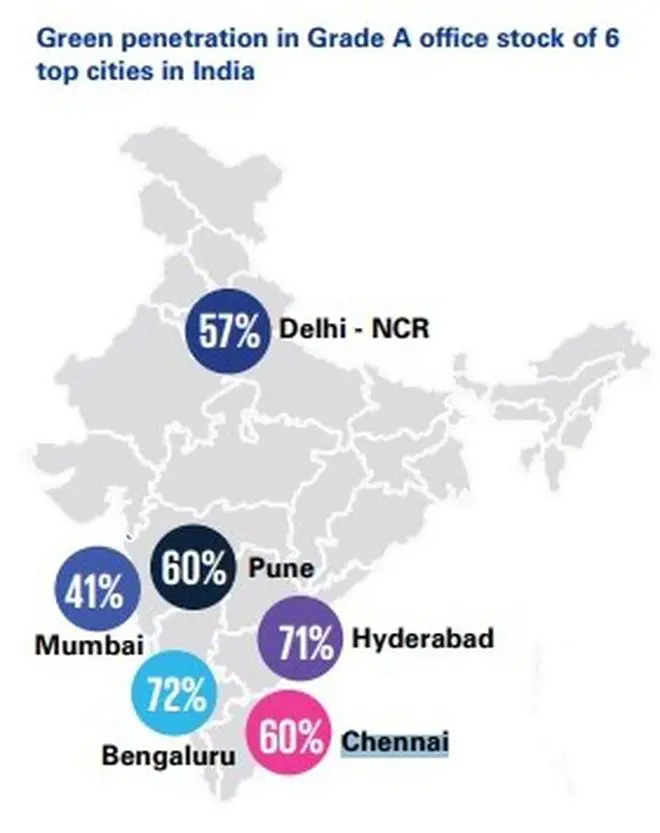Among the major cities in the country, Bengaluru accounts for the largest stock of green-certified buildings. Delhi NCR occupies the second position, followed by Hyderabad, Mumbai, Chennai, and Pune, according to a report by KPMG and Colliers.
With rising occupier preference for green buildings and green leases, India’s green footprint is on the rise. Over the last few years, especially post-Covid-19, there has been a rise in green-certified stock for Grade A office buildings. The number of green-certified buildings has witnessed over five-fold increase since 2010.
The majority of the new supply across the top six cities of the country in the last 3-4 years is green. As of September 2023 quarter, India has a total Grade A office stock of about 691 million sq feet, of which about 421 million sq ft of Grade A office stock have obtained at least one green certification.
- Also read: Macrotech Developers adds 7 land parcels in H1 to build ₹14,300 crore worth housing projects
Sustainability commitments
“Green-certified office buildings have almost doubled since 2016 to an impressive 421 million sq ft, forming over 60 per cent of India’s Grade A office stock. This showcases developers’ and occupiers’ rising commitment towards sustainability. This is likely to reflect in terms of favourable pricing and asset valuation resulting in increased brand value, client retention and rental upside,” said Badal Yagnik, Chief Executive Officer, Colliers India.
In 2023, the office real estate market witnessed a significant shift towards sustainability, registering an 83 per cent growth in green office stock compared to 2016.
As of Q3 2023, Bengaluru, Hyderabad, and Chennai held a higher proportion of green-certified buildings with almost three in every five assets green-certified.

Developers are also focussing on retrofitting to benchmark existing buildings with the sustainability criteria. Cities like Mumbai and Delhi NCR hold the highest opportunity to upgrade existing Grade A office assets.
Green leases are expected to gain momentum led by benefits such as a reduction in overall energy consumption.
Most green buildings have an estimated added cost of 5 to 15 per cent as compared with a conventional building with a payback period of 3-5 years.
Carbon emission
India contributes to about 7.3 per cent of global emissions with real estate being one of the largest contributors. The carbon emissions may reach 4.48 giga tonnes by 2030 from 2.88 giga tonnes in 2021. However, a reduction in emissions by 22 per cent today can keep 2030 emissions lower, at 3.48 giga tonnes. Energy-efficient technologies such as automated HVAC systems, solar panels, and green roofs may result in 70 per cent less waste and 10 per cent savings in operational costs yearly.
“It is time for the real estate sector to take a leadership role in promoting sustainability through buildings that are energy and resource-efficient and drive positive change for the environment and society as a whole.” said Neeraj Bansal, Partner, Co-Head and COO - India Global, KPMG in India.







Comments
Comments have to be in English, and in full sentences. They cannot be abusive or personal. Please abide by our community guidelines for posting your comments.
We have migrated to a new commenting platform. If you are already a registered user of TheHindu Businessline and logged in, you may continue to engage with our articles. If you do not have an account please register and login to post comments. Users can access their older comments by logging into their accounts on Vuukle.